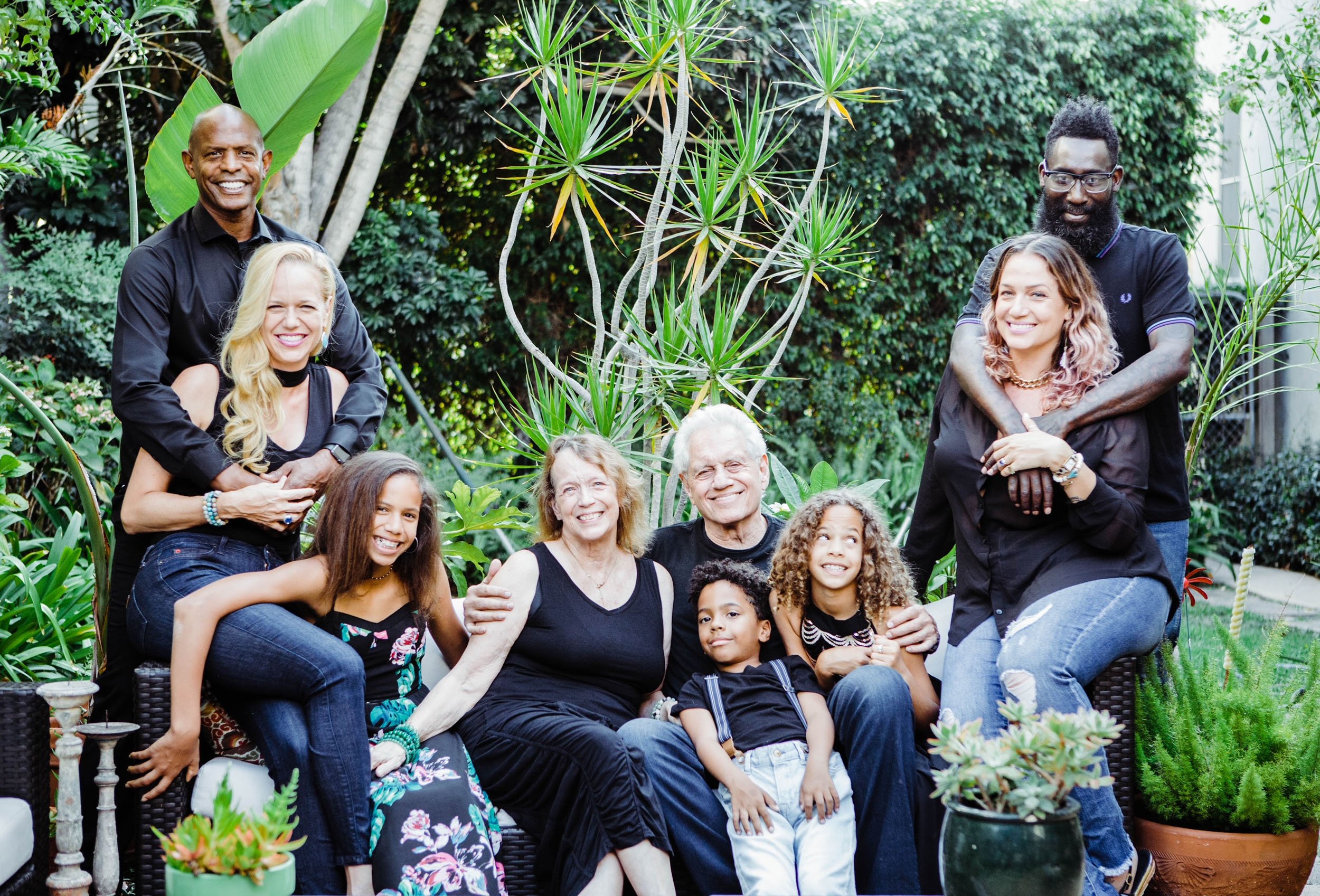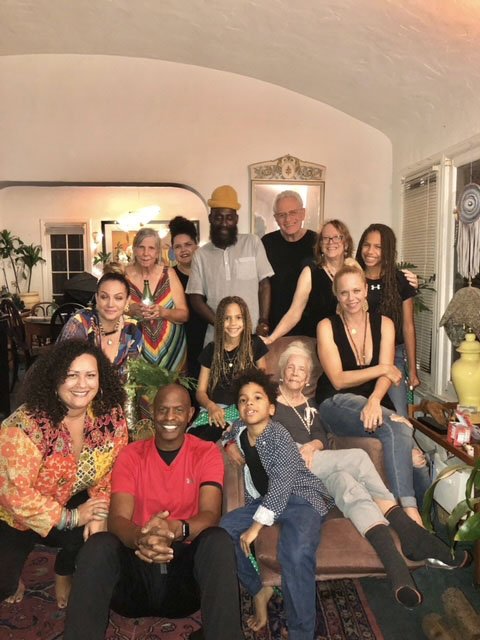QUICK GLIMPSE:
Who am I?

Bio
I—Lian—am a white girl born in the Black Belt South under apartheid. My parents, academic allies to the Civil Rights Movement, could only show me what white supremacy looks like in a segregated society—and how to take a stand for democratic rights. Through the historic period I lived in, I aligned with the struggle for Black liberation, with the fight to stop U.S. intervention in Vietnam, with the rebellion against imperialist patriarchy reborn out of the second wave of feminism.
This website is a record, a map, a conjuring of bits and pieces of my learnings that, perhaps, can be of use. The actual collection of my materials is in the Eric Mann and Lian Hurst Mann Papers in the W.E.B. DuBois Special Collections Library at University of Massachusetts, Amherst.
Thank you for caring to know me. I have had, and continue to have, a full life. I am currently dedicated to making visible the invisible labor done primarily by women in the domestic realm across the globe. I am located in Los Angeles where I am a member of Hand in Hand: The Domestic Employers Network, organizing in campaigns of the National Domestic Workers Alliance and the California Domestic Workers Coalition.
I come to this moment from a lengthy history of participation in the Left projects of my generation. My parents’ child, I have always been an intellectual first, but I quickly figured out that—despite my commitment to fighting racism and U.S. imperialism in general—unless I was an “affiliated intellectual,” that is, a part of an organization, my work would have no resonance, meaning, or impact. In the early 1970s of my youth, I was a founding member of the socialist-feminist Berkeley/Oakland Women’s Union and member of the Berkeley Radical Psychiatry collective. Upon studying Marxism and discovering Leninism as a graduate student in Architecture, I chose to align the two central threads of my development—Walter Gropius at the Bauhaus in the Weimar Republic said “after you study design, go into the factory and learn how to produce the housing needed by socialism” and Vladimir Illich Lenin said, “go into the factories of basic industry and organize the working class that has the power to overthrow capitalism.” Together with my husband Eric Mann, I spent ten years as a shop-floor organizer against racism and for union democracy while working with the August Twenty-Ninth Movement (ML) and the League of Revolutionary Struggle (ML)—in the Molders’ Union at Delaval Turbine, the Boilermakers’ Union at Todd Shipyard, and the United Auto Workers at Ford Motor Company. During this time, I had two daughters and participated in the movement for quality communal childcare that thrived under the second wave of feminism.
Upon layoff with plant closings, given my continuing interest and investment in design, I began to practice architecture and I studied Left culture production in writing a dissertation for PhD in Architecture. I was fortunate to become Editor of Architecture California, with the mandate from progressive leaders in our field--Barton Phelps, Joe Esherick, Bill Turnbull, and Alicia Rosenthal--to let the architects speak, to move away from reporting to publishing voices from the field in practice. I am grateful to have received awards for my body of work as Editor from 1991-1996.
Meanwhile, Eric and other leaders of the UAW Campaign to Keep G.M. Van Nuys Open initiated the Labor/Community Strategy Center, a “think tank/act tank” focusing on organizing a Black/Latin@ alliance against U.S. imperialism in Los Angeles—independent from the county federation of labor and the Democratic Party. I transitioned from Architecture California to be a full-time political educator. I was one of the core faculty at the Center’s National School for Strategic Organizing, teaching Left political theory. I was involved in the mentoring and training of many of the most talented and dedicated “organizers in training” who went on to play key leadership roles in Black Lives Matter, Grassroots Global Justice, Puente, and National Domestic Workers Alliance and many other prominent social justice groups in the U.S. I wrote, edited, and produced publications and worked to advance the production of oppositional culture, which held the entanglement of my change-making practice as architect and organizer. I continued to weave these threads with various experiences along the way. Expanding what I learned from Architecture California, I created the bilingual English/Spanish periodical AhoraNow, dedicated to publishing voices from the front lines of the struggle against racism and national oppression. One of my greatest contributions was to work with powerful Black, Latin@, and women leaders of the Strategy Center and Bus Riders Union to help them tell their stories—Della Bonner “A Thirty Year-Ride: My Eyes Still on the Prize,” Ricardo Zelada “Bus Riders as a Class” and Barbara Lott-Holland “Life as a Consciousness Raising Experience.”
As a member of the Los Angeles-based Program Demand Group, which coalesced to encourage the growth of the antiracist/anti-imperialist trend in the U.S. left, I was the primary editor, organizer, and writer of the group’s document Towards a Program of Resistance: We Make These Demands Against the Institutions of U.S. Imperialism, which remains an influential resource for anti-imperialist organizers.
My polemic on revolutionary education—”Publishing on the Terrain of the Bourgeois Culture Industry and Crisis in the Socialist Project” was written in 1998 to participate in the international debate over the path to socialism that occurred during the 150th anniversary year of the publication of The Communist Manifesto. The polemic argues for a systematic program of encounters through an international network of publications aimed at fostering an exchange of theoretical, propagandist, agitational, and organizing work, that is, creating a shared experience of political exposures. I wanted to see indirect learning carry the vitality of direct experience through the character of Left publications. I using AhoraNow as a “collective organizer,” I coalesced a Strategy Center delegation to Paris—Rita Burgos, Martin Hernandez, Eric Mann and myself, and did a special issue in which we all wrote dedicated articles that had a significant following when we arrived. I was chosen to be on a panel “a socialist plan for the cities” where I debated those who saw it through a “class” lens. I argued “the urban question is the national question.”
With my partner Eric Mann, I confronted the Democratic Party Leadership Council’s pro-imperialist program in the two-part series of articles,“The Clinton Campaign’s Center-Right Challenge to the Left: What Is the Nature of Electoral Opposition?” AhoraNow no.3 (Summer/Fall 1996) and “The 2000 U.S. Presidential Elections and the Anti-Imperialist Left: Dilemmas, Hard Choices, Opportunities” an AhoraNow Commentary (December 2000).
As editor for Strategy Center Publications, I contributed to numerous publications of political line by the Urban Strategies Group at the Center—Immigrant Rights and Wrongs (1994); New Vision for Urban Transportation (1995); Reconstructing LA from the Bottom Up (1993); Call to Reject the Federal Weed and Seed Program in Los Angeles (1992); and L.A.'s Lethal Air (1991). All of these publications are available in Spanish and can be located at the website www.thestrategycenter.org.
As an architect and culture theorist, I simultaneously wrote extensively about the culture industry and the production of oppositional culture, including “Revolutionary Education in the Age of the Culture Industry” (1998), “Subverting the Avant-Garde: Critical Theory’s Real Strategy” (1996), “Popular Propaganda” (1996), and “Crossover Dream: A Parti, Structures for Knowledge of Difference” (1991). With Thomas Dutton, my partner in many struggles in the discourse of architecture, I was co-editor of Reconstructing Architecture: Critical Strategies and Social Practices (1996). That body of work continued in “Problems in Theorizing ‘The Political’ in Architectural Discourse” in Rethinking Marxism, 12:4 (Winter 2000) and “Affiliated Practices and Aesthetic Interventions: Creating Counterspace in Los Angeles,” which describes the practice of the Strategy Center’s “Make History” culture production project, in particular the On-the-Bus Teatro of the Bus Riders Union that I helped to initiate, then led by Martin Hernandez.
Throughout, I have maintained my conviction—perhaps obsession—that it is essential to the Left to analyze the role of patriarchy in the development of modes of production and reproduction, especially under imperialism—this is, imperialist patriarchy. I am influenced always by the studies of academic socialist-feminists and the international movements of grassroots feminisms—Grassroots Global Justice Alliance’s Feminist Organizing Schools in partnership with the World March of Women. I am looking at the objective conditions of imperialist patriarchy, the global struggles of resistance to its horrors, and the invention of its alternatives. All readings of the objective conditions of twenty-first century capitalist reveal the giant underbelly of feminized super-exploitation. Why does it seem so clear to me? Imperialism, colonialism, national oppression, racial subjugation all exist as integrated with the expropriation of womens’ bodies and super-exploitation of invisible feminized labor. Do we understand that imperialism is the highest stage of capitalism? Built on a foundation of the expropriation of nature and super-exploitation and genocide against colonial peoples by the U.S. and Europe, there is no corner of the planet that does not reveal, upon study, the absolute necessity for imperialism of continuing to steal low-wage and no wage invisibilized reproductive labor. We only need see the economic theft of women trekking every day in search of water to provide for their communities. It is not invisible. It is intentionally invisibilized.
What do I do at this stage to continue weaving these threads? I am looking for the forms of organization that can lead to women’s liberation. In my small way in recent years, I have continued to create cultural counterspace—Womb of Becoming is a retreat space for gatherings focused on “Awakening to Patriarchy: Envisioning Women’s Liberation.” As part of this project, I began a series “My Mothers’ Stories,” available on this website.
I am currently dedicated to contributing to advances of the international domestic worker women’s movement. I serve on the California Domestic Worker Health and Safety Advisory Committee, mandated by SB321—representing Hand in Hand: The Domestic Employers Network.
This website like all of my thinking is based on a contradiction. Personally, I do not seek nor even want attention. But I do believe my legacy, that I continue to build, represents a unique contribution to women’s liberation, cultural resistance, insurgent labor, Black and Latina and white anti-racist women’s leadership development, and to a complex but consistent effort to integrate a fierce opposition to U.S. and European imperialism, and a deep commitment to elevating the theoretical and practical contributions of anti-imperialist feminism. I hope this website is a stimulating landing spot for women and men who are moved by a life of struggle and are on their own journey to change the world.
I am married for 48 years to Eric Mann. I have two daughters—Celia Ward-Wallace and Melinda Alexander. My three grandchildren live near me in Los Angeles. I received my BArch, MArch, PhD from University of California, Berkeley, College of Environmental Design, Department of Architecture.
This website is a record, a map, a conjuring of bits and pieces of my learnings that, perhaps, can be of use.






Many questions—personal and political—have guided my journey.
If you are looking for my political orientation, the most central questions have been:
What are strategies for liberation of peoples exploited and oppressed throughout the world and inside the United States by US imperialism?
What are paths forward for visibilizing the invisible domestic labor of women?
What is the role of counter-hegemonic cultural production in human liberation—art, architecture, environment?
What life choices do I make “to be of use”
It all started when I was asked: Do you want to Make History?
Look at these revolutionary times! Who wouldn’t want to join the world revolutionary movement?





